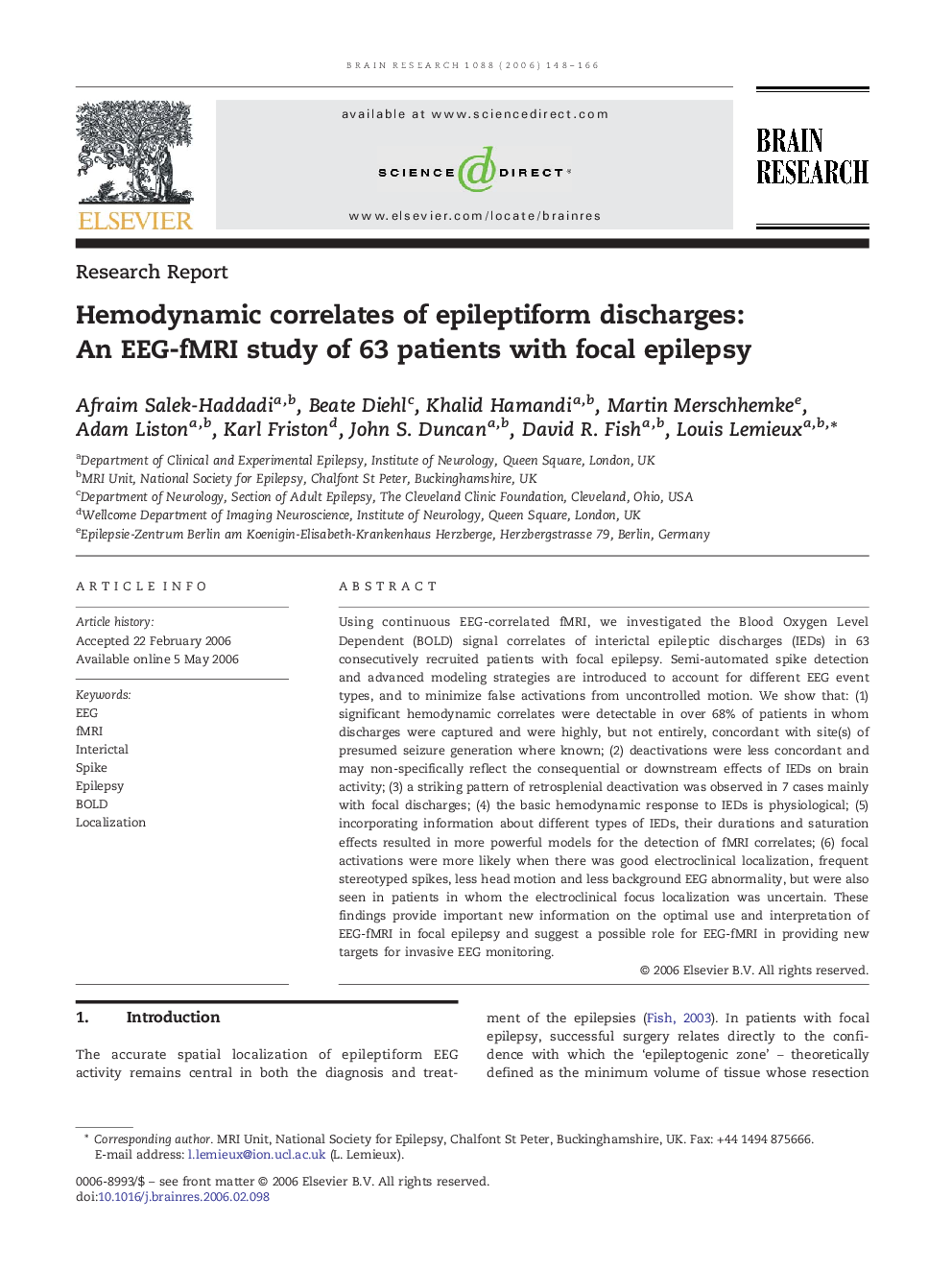| Article ID | Journal | Published Year | Pages | File Type |
|---|---|---|---|---|
| 4333087 | Brain Research | 2006 | 19 Pages |
Using continuous EEG-correlated fMRI, we investigated the Blood Oxygen Level Dependent (BOLD) signal correlates of interictal epileptic discharges (IEDs) in 63 consecutively recruited patients with focal epilepsy. Semi-automated spike detection and advanced modeling strategies are introduced to account for different EEG event types, and to minimize false activations from uncontrolled motion. We show that: (1) significant hemodynamic correlates were detectable in over 68% of patients in whom discharges were captured and were highly, but not entirely, concordant with site(s) of presumed seizure generation where known; (2) deactivations were less concordant and may non-specifically reflect the consequential or downstream effects of IEDs on brain activity; (3) a striking pattern of retrosplenial deactivation was observed in 7 cases mainly with focal discharges; (4) the basic hemodynamic response to IEDs is physiological; (5) incorporating information about different types of IEDs, their durations and saturation effects resulted in more powerful models for the detection of fMRI correlates; (6) focal activations were more likely when there was good electroclinical localization, frequent stereotyped spikes, less head motion and less background EEG abnormality, but were also seen in patients in whom the electroclinical focus localization was uncertain. These findings provide important new information on the optimal use and interpretation of EEG-fMRI in focal epilepsy and suggest a possible role for EEG-fMRI in providing new targets for invasive EEG monitoring.
